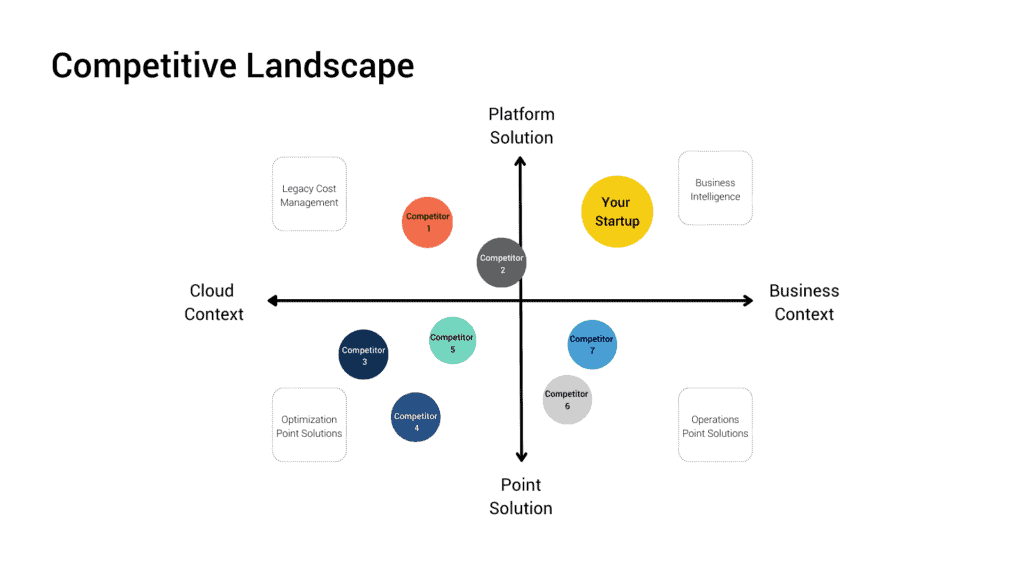The Crossroads Of Apple's AI: A Competitive Analysis

Table of Contents
Apple's AI Strengths
Apple's AI prowess isn't immediately apparent as a sprawling, open ecosystem like some competitors. Instead, its strength lies in focused integration and a commitment to user privacy.
Siri's Evolution and Strengths
Siri, Apple's virtual assistant, has undergone significant improvements. While it may not boast the same breadth of third-party integrations as Alexa or Google Assistant, Siri excels in its tight integration with the Apple ecosystem.
- Improved voice recognition: Siri's accuracy has noticeably increased in recent years, handling various accents and background noise with greater proficiency.
- Contextual understanding: Siri increasingly understands the context of conversations, allowing for more natural and efficient interactions.
- Proactive suggestions: Siri offers helpful suggestions based on user behavior and calendar events, enhancing user experience.
- Limitations compared to competitors: Siri still lags behind in third-party app integration and overall skill versatility compared to Google Assistant and Alexa.
On-Device AI and Privacy
Apple champions on-device processing for its AI features, prioritizing user privacy over data collection. This differentiates Apple significantly from cloud-based competitors.
- Enhanced security: Processing data locally minimizes the risk of data breaches and unauthorized access.
- Reduced data dependency: On-device AI reduces reliance on internet connectivity, ensuring functionality even offline.
- Implications for feature development: On-device processing can limit the complexity of certain AI features due to hardware constraints.
- Trade-offs in processing power: The trade-off is a potential reduction in feature sophistication compared to cloud-based AI systems.
Image Recognition and Machine Learning in iOS
Apple leverages AI extensively in iOS, enhancing user experience through advanced image recognition and machine learning.
- Examples of AI-powered features: Intelligent photo organization, object recognition in photos, augmented reality features like Measure and Memoji.
- User experience enhancements: AI streamlines tasks, improves accessibility, and delivers more personalized experiences.
- Comparisons with Android's AI capabilities: While Android offers similar features, Apple's integration within its ecosystem often provides a more seamless and user-friendly experience.
Apple's AI Weaknesses
Despite its strengths, Apple's AI strategy presents certain weaknesses that hinder its broader reach and market dominance.
Lack of a Comprehensive AI Ecosystem
Unlike Google and Amazon, Apple maintains a less open approach to its AI development. This closed ecosystem limits third-party developer access and integration.
- Limited developer APIs: Fewer publicly available APIs restrict the development of third-party apps and services that integrate with Apple's AI.
- Slower adoption of new AI technologies: The closed ecosystem can lead to slower adoption of cutting-edge AI advancements.
- Challenges in creating a thriving AI developer community: Limited access to tools and resources restricts the growth of a vibrant Apple AI developer community.
Dependence on Hardware Integration
Apple's AI is heavily intertwined with its hardware. This tight integration, while beneficial for performance, limits the adaptability and scalability of its AI solutions.
- Challenges in expanding AI capabilities beyond Apple devices: Porting Apple's AI to other platforms presents significant challenges.
- Limitations in cross-platform compatibility: Apple's AI isn't readily available on non-Apple devices, limiting its potential reach.
- Potential for market fragmentation: The hardware dependence risks creating a fragmented market, hindering widespread AI adoption.
Catching Up in AI Research and Development
While Apple invests heavily in AI research and development, it may lag behind larger players like Google and Microsoft in terms of sheer scale and the volume of published research.
- Acquisitions in the AI space: Apple has acquired several AI companies, but its overall R&D efforts might need to be further scaled to compete aggressively.
- Investment in AI research: While substantial, Apple's investment may need to be further amplified to match the scale of competitors.
- Comparison of published research papers with competitors: A direct comparison of research output reveals a relative difference in the volume of publicly available research.
Competitive Landscape Analysis
Understanding Apple's position requires analyzing its key competitors.
Google's AI Dominance
Google's AI ecosystem is vast, extending across search, cloud computing (Google Cloud AI), and numerous AI-powered products. Google's open approach and massive data sets give it a significant edge.
Microsoft's AI Integration
Microsoft integrates AI extensively into Azure, Windows, and other products, leveraging its cloud infrastructure to offer powerful AI services. Microsoft's enterprise focus differentiates it from Apple's consumer-centric approach.
Amazon's Alexa and AI Services
Amazon's success with Alexa and its AWS AI services showcases the power of a broad, open AI ecosystem. This contrasts sharply with Apple's more closed approach.
Conclusion
Apple's AI strategy presents a mixed bag. Its strengths lie in on-device processing, privacy, and tight ecosystem integration, exemplified by Siri and iOS features. However, weaknesses include a less open ecosystem, dependence on hardware, and potentially slower progress in core AI research compared to larger competitors. The competitive landscape is fiercely contested, with Google, Microsoft, and Amazon possessing vastly larger and more open AI ecosystems. Apple's future success will depend on strategically balancing its privacy-focused approach with the need for broader ecosystem expansion and more aggressive research and development. Stay tuned for more insights into the evolving landscape of Apple's AI and its competitive journey!

Featured Posts
-
 Navigating The Chinese Market Bmw Porsche And The Complexities Of Doing Business In China
May 09, 2025
Navigating The Chinese Market Bmw Porsche And The Complexities Of Doing Business In China
May 09, 2025 -
 Fox News Faces Defamation Lawsuit From January 6th Figure Ray Epps
May 09, 2025
Fox News Faces Defamation Lawsuit From January 6th Figure Ray Epps
May 09, 2025 -
 India En Brekelmans Een Analyse Van De Relatie
May 09, 2025
India En Brekelmans Een Analyse Van De Relatie
May 09, 2025 -
 Cologne Climbs Above Hamburg In Bundesliga 2 Matchday 27
May 09, 2025
Cologne Climbs Above Hamburg In Bundesliga 2 Matchday 27
May 09, 2025 -
 Fur Rondy A Long Wait A Short Race And Unending Determination
May 09, 2025
Fur Rondy A Long Wait A Short Race And Unending Determination
May 09, 2025
Latest Posts
-
 Two Pedestrians Dead After Being Struck By Driver In Elizabeth City
May 09, 2025
Two Pedestrians Dead After Being Struck By Driver In Elizabeth City
May 09, 2025 -
 Elizabeth City Road Fatal Pedestrian Accident Claims Two Lives
May 09, 2025
Elizabeth City Road Fatal Pedestrian Accident Claims Two Lives
May 09, 2025 -
 Driver Kills Two Pedestrians In Elizabeth City Road Accident
May 09, 2025
Driver Kills Two Pedestrians In Elizabeth City Road Accident
May 09, 2025 -
 Navigating The Elizabeth Line A Guide For Wheelchair Users
May 09, 2025
Navigating The Elizabeth Line A Guide For Wheelchair Users
May 09, 2025 -
 Inside The Reimagined Queen Elizabeth 2 A 2 000 Guest Cruise Ship
May 09, 2025
Inside The Reimagined Queen Elizabeth 2 A 2 000 Guest Cruise Ship
May 09, 2025
